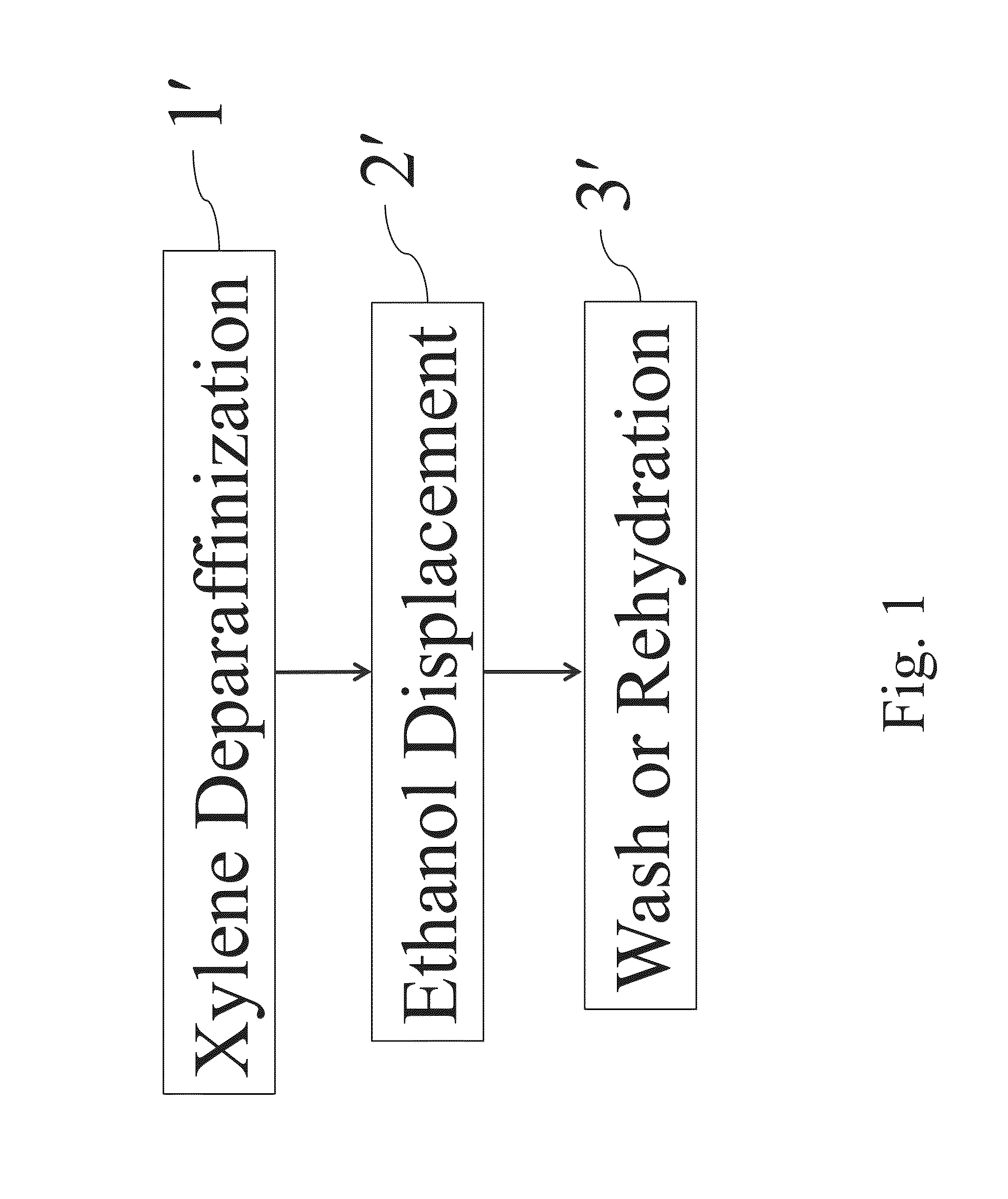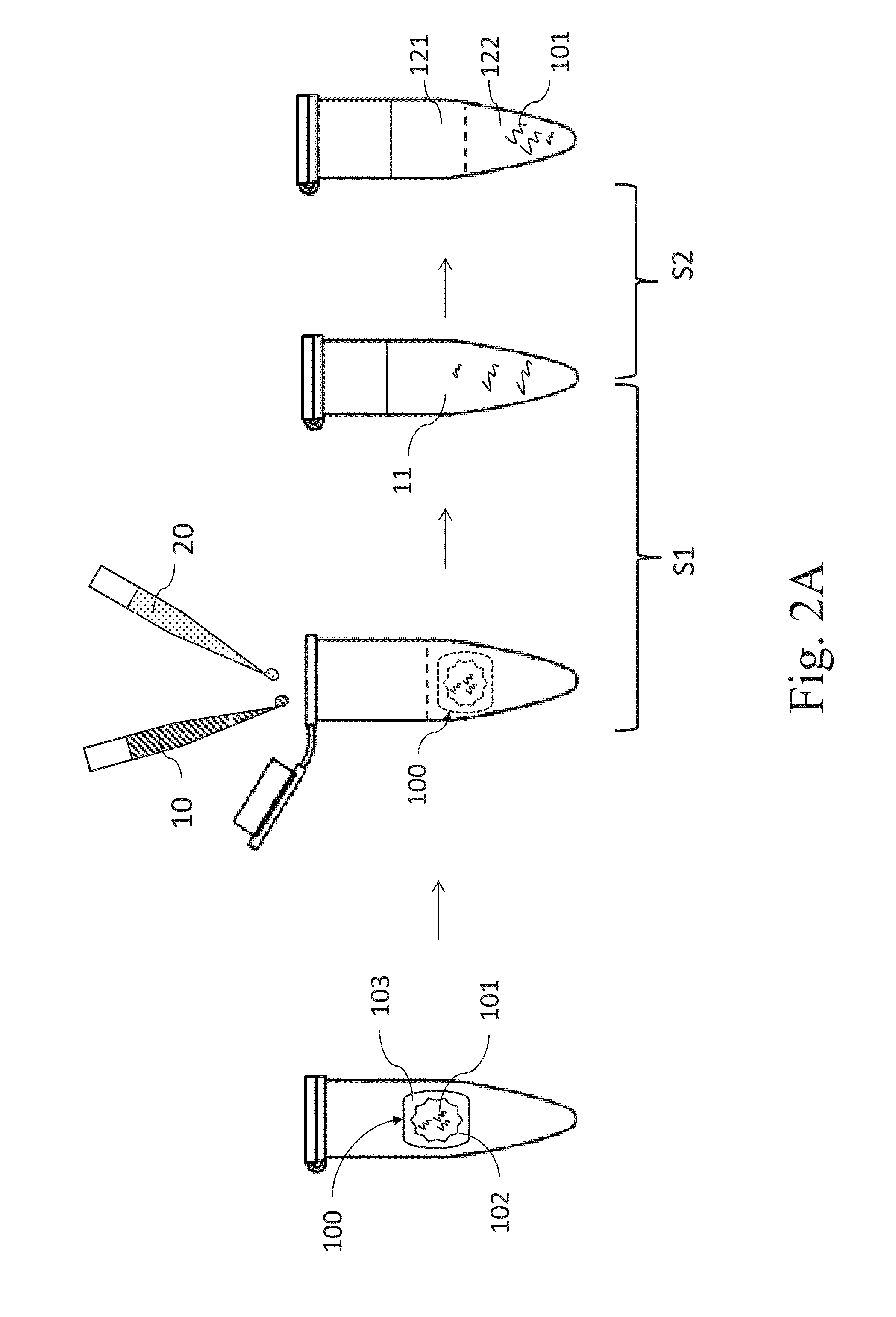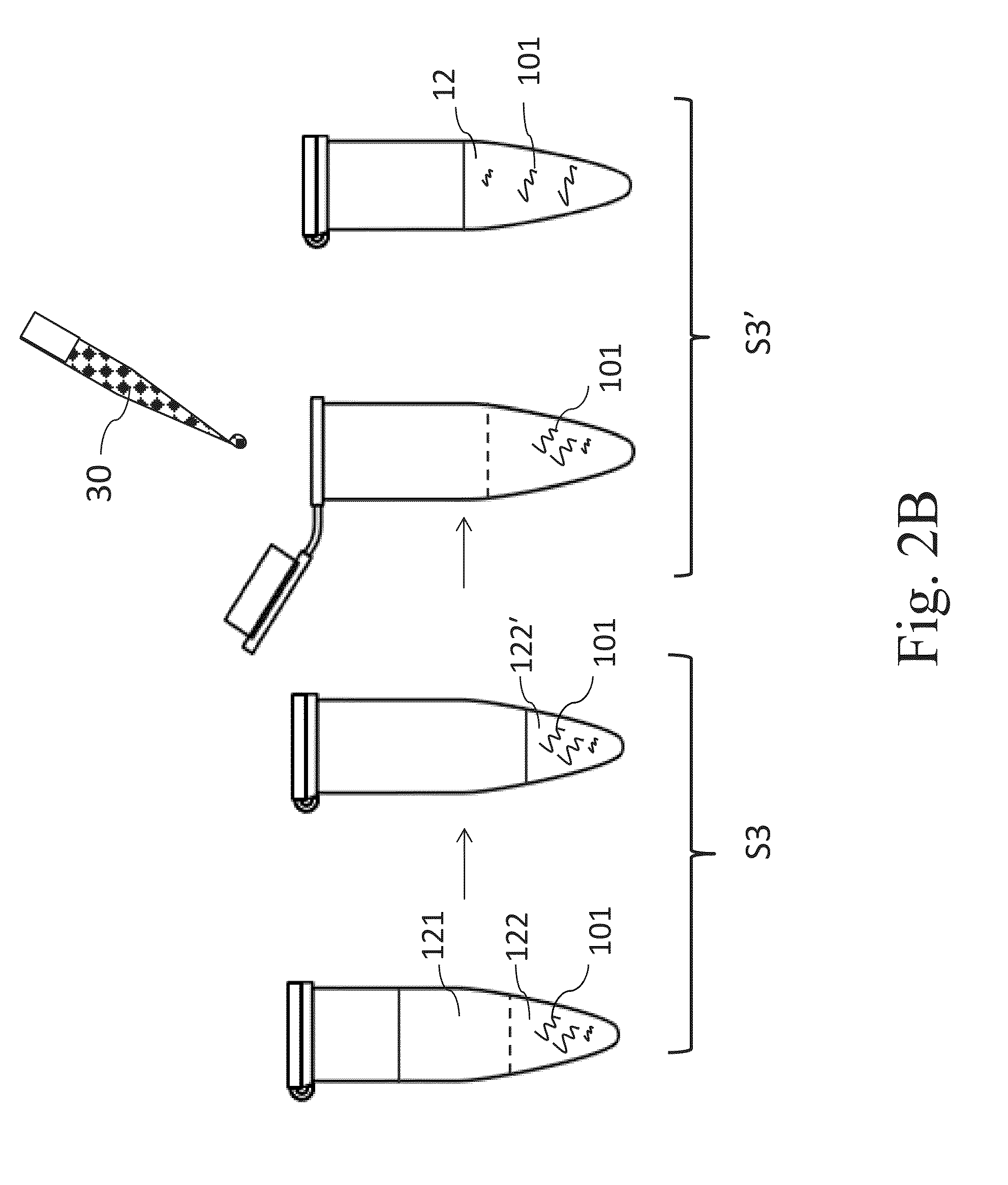Method for isolating nucleic acids from formalin-fixed paraffin embedded tissue samples
a formalin-fixed paraffin and nucleic acid technology, applied in the field of nucleic acid isolating, can solve the problems of unfavorable nucleic acid integrity and efficiency, risk of tissue loss, and unfavorable effects as previously described, so as to improve tissue lysis, promote the lysis of biological tissue 102, and prolong the heating time
- Summary
- Abstract
- Description
- Claims
- Application Information
AI Technical Summary
Benefits of technology
Problems solved by technology
Method used
Image
Examples
example 2
Xylene-Based Pretreatment Method of Dissolving Paraffin (Pretreatment 1)
[0070]The Example 2 describes one preferred embodiment according to the present invention, which describes an example of pretreating the small, medium and large FFPE tissue samples respectively for removing the paraffin and lysing the biological tissue samples simultaneously, followed by the “affinity chromatography method” to obtain the nucleic acid products. The steps are described as follow.
[0071]Firstly, add 400 μl xylene (oily reagent), 180 μl aqueous reagent (1% SDS, 30 mM Tris-HCl, 10 mM EDTA) and 20 μl proteinase K into the microtubes accommodating FFPE tissue samples respectively and mix those materials by vortex for 10 seconds to obtain a mixture 2A. Then heat the whole mixture 2A at 56° C. for 1 hour, and let the microtube stand at room temperature for a while. Meanwhile, start the heater (or the heating device) to arrive at 90° C.; and put the microtube containing the mixture 2A into the heater and h...
example 3
6-bromohexyl acetate-based pretreatment method of dissolving paraffin (Pretreatment 2)
[0074]The Example 3 describes one preferred embodiment according to the present invention, which describes an example of pretreating the small, medium and large FFPE tissue samples respectively for removing the paraffin and lysing the biological tissue samples simultaneously, followed by the “affinity chromatography method” to obtain the nucleic acid products. The steps of practicing the Example 3 are substantially the same with the Example 2, with the only difference in that the oily reagent is 6-bromohexyl acetate in Example 3. Thus it is not described in detail.
example 4
Citrosol-Based Pretreatment Method of Dissolving Paraffin (Pretreatment 3)
[0075]The Example 4 describes one preferred embodiment according to the present invention, which describes an example of pretreating the small, medium and large FFPE tissue samples respectively for removing the paraffin and lysing the biological tissue samples simultaneously, followed by the “affinity chromatography method” to obtain the nucleic acid products. The steps of practicing the Example 4 are substantially the same with the Example 2, with the only difference in that the oily reagent is citrosol in Example 4. Thus it is not described in detail.
PUM
| Property | Measurement | Unit |
|---|---|---|
| Temperature | aaaaa | aaaaa |
| Temperature | aaaaa | aaaaa |
| Efficiency | aaaaa | aaaaa |
Abstract
Description
Claims
Application Information
 Login to View More
Login to View More - R&D
- Intellectual Property
- Life Sciences
- Materials
- Tech Scout
- Unparalleled Data Quality
- Higher Quality Content
- 60% Fewer Hallucinations
Browse by: Latest US Patents, China's latest patents, Technical Efficacy Thesaurus, Application Domain, Technology Topic, Popular Technical Reports.
© 2025 PatSnap. All rights reserved.Legal|Privacy policy|Modern Slavery Act Transparency Statement|Sitemap|About US| Contact US: help@patsnap.com



